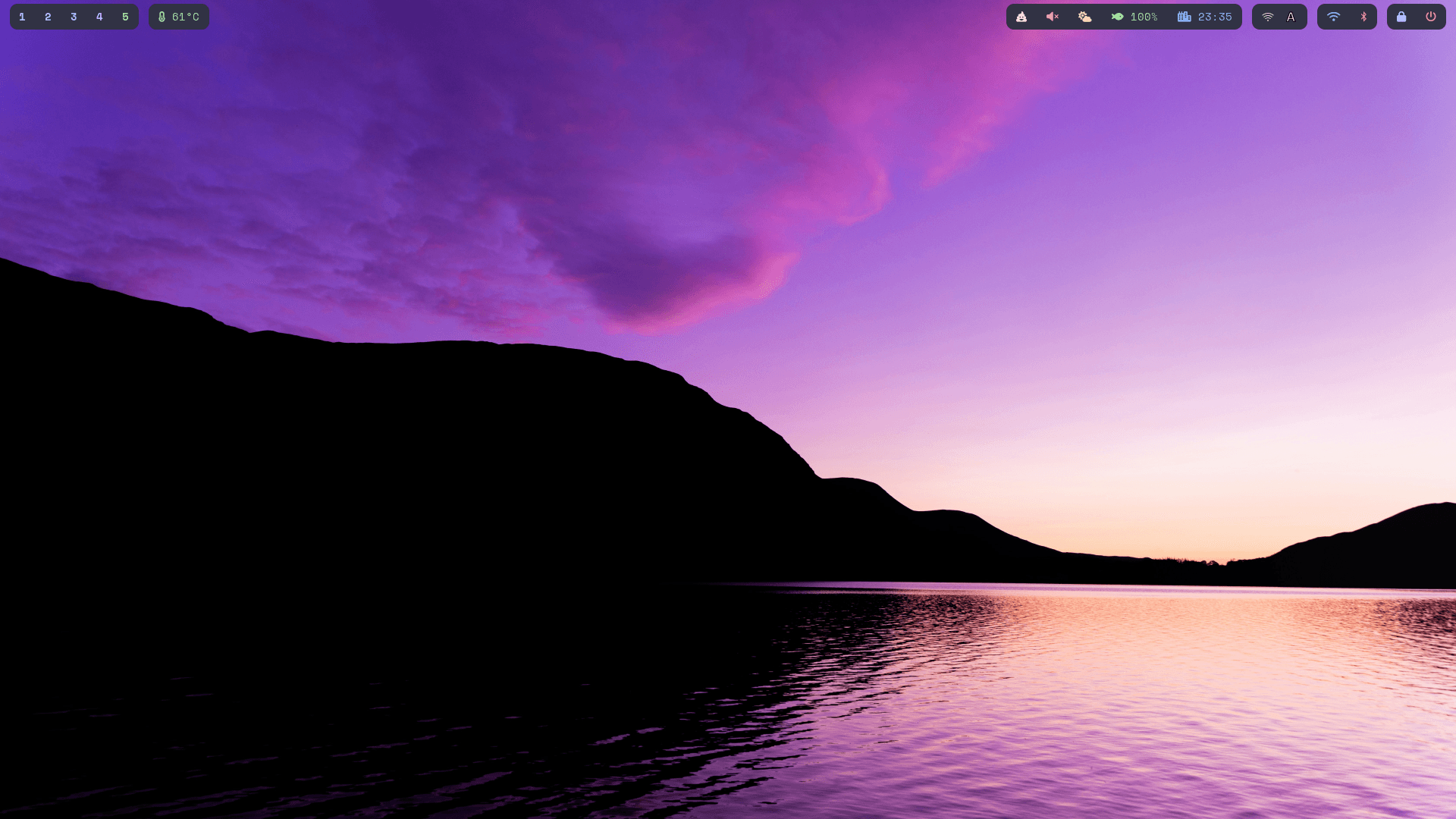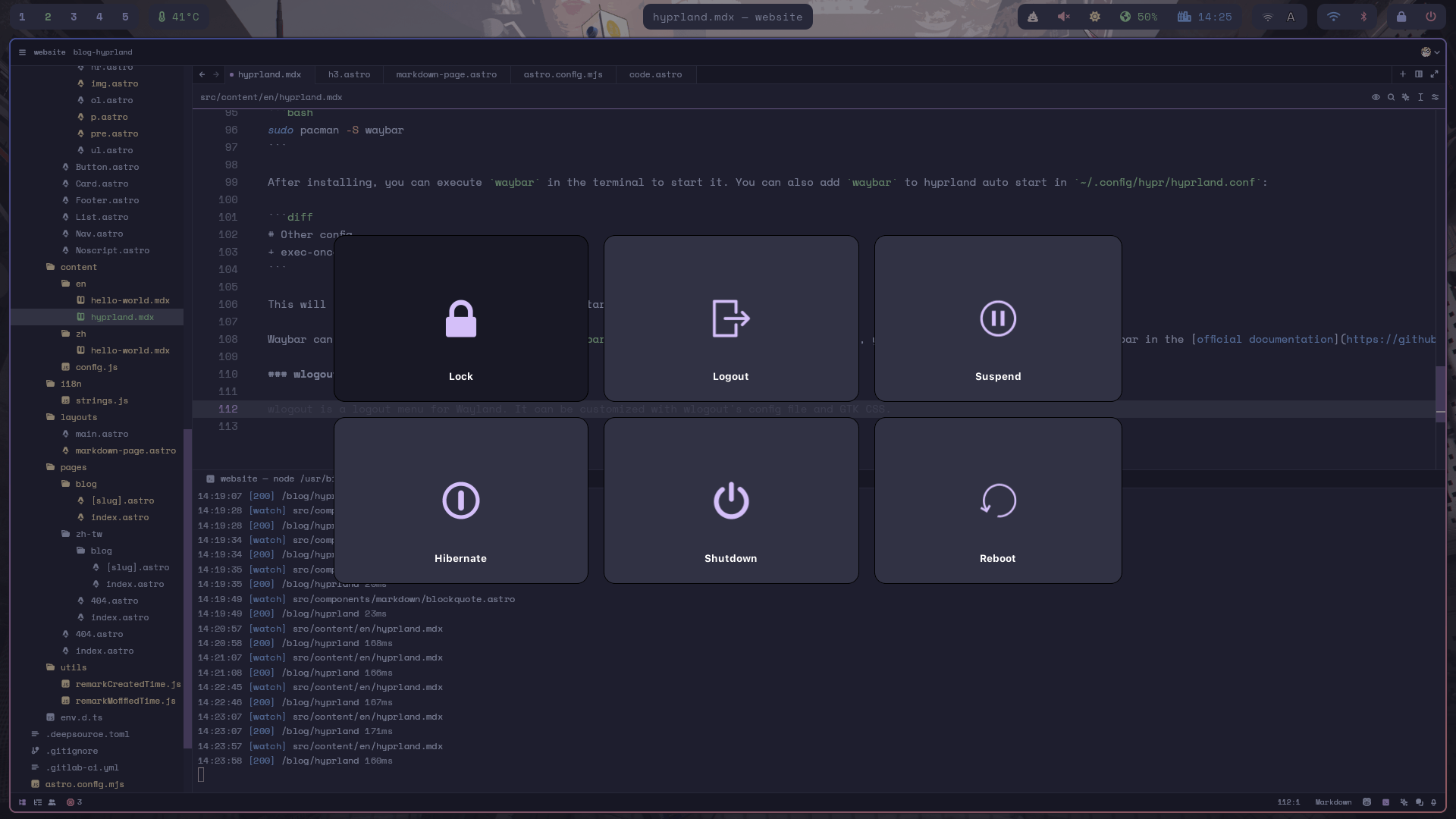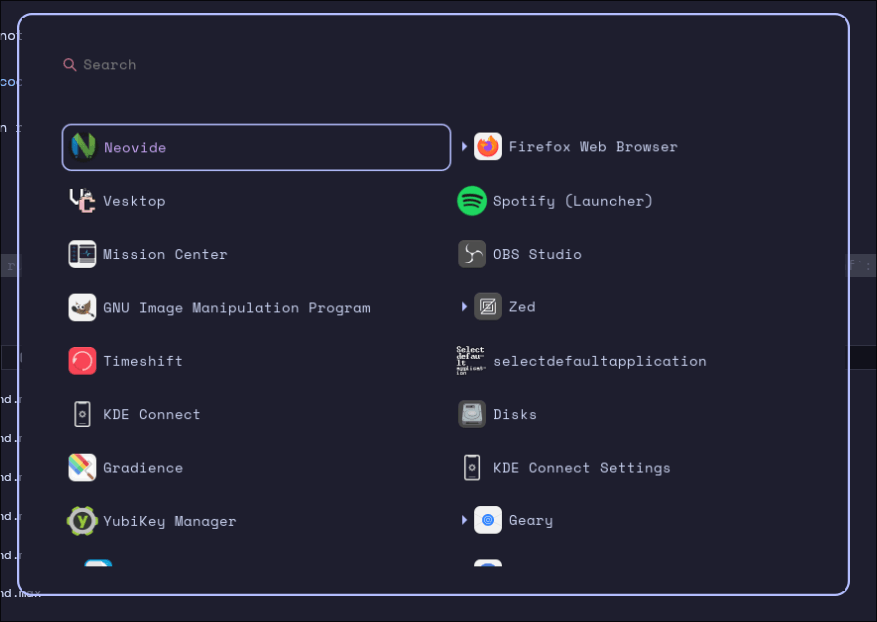嘿,如果你看得懂這段文字,那麼恭喜你,這篇文章有中文版本,你可以點頁尾的翻譯圖示或是到這裡。
One day, I was browsing the internet, and I found a couple news posts about a new window manager called hyprland, which is based on Wayland.
There is already plenty of posts on Reddit (mainly r/unixporn, cool place to check out btw) showing off their beautiful desktop that doesn’t looks like traditional desktops like Gnome or KDE, which is a thing I’ve trying to do for years.
After digging through some documentation and videos, I decided to give it a try. I will share how I installed and configured hyprland on my computer in this post.
Oh btw, here’s how it looks like right now:
Installation
Installation is very simple, you only need to install bare metal Arch Linux (Without any desktop environment) and run the following command:
Hey, if you are brave enough you can also install NixOS, but I choose not to do so :)
Friendly reminder: You probably don’t want to use NixOS cuz it’s a pain, at least for me.
sudo pacman -S hyprlandYou might also need kitty terminal emulator, because hyprland uses kitty as the default terminal emulator in its default configuration. You can install it by running:
sudo pacman -S kittyWell, isn’t that simple? Note that I still recommend to use Arch Linux as the base system, but using Arch based distro like Manjaro or EndeavourOS will work too.
This blog posts will assume you’re using Arch Linux as the base system.
Note that I don’t recommended to use Debian or Fedora, they don’t update as fast as Arch Linux does.
You can still use it if you want to, but some additional components needed by hyprland or required to make hyprland better might not exists in their software repositories. You probably need to compile them by yourself.
After installing hyprland, you may also need a login manager if you don’t want to type hyprland under tty to start desktop everytime you start your PC. I use sddm because it’s simple and customizable. You can install it by running:
sudo pacman -S sddmAfter a quick reboot, Voilà! You successfully installed hyprland with sddm as display manager on your computer.
Customization
Oh wait, you got a destop that’s not even close beautiful? Due to hyprland ships with a bare minimum, auto generated configuration, you need to configure everything from ground up. For example following key binding are not working by default:
- Brightness control
- Volume control
- Screenshot
Not to mention there is not a lock screen by default, you see what the hightly customizable here? Hyprland doesn’t configure everything for you out of the box, you need to do everything by yourself.
I first remove the auto generated config warning banner appeared on the top of the screen:
Open ~/.config/hypr/hyprland.conf, and comment following line starts with autogenerated:
# #######################################################################################
# AUTOGENERATED HYPR CONFIG.
# PLEASE USE THE CONFIG PROVIDED IN THE GIT REPO /examples/hypr.conf AND EDIT IT,
# OR EDIT THIS ONE ACCORDING TO THE WIKI INSTRUCTIONS.
# #######################################################################################
autogenerated = 1 # remove this line to remove the warning
# autogenerated = 1 # remove this line to remove the warningThe small warning banner will disappear after you save the file. Hyprland will reload config file as soon as it detects changes in the config file. You can also trigger config reload by typing hyprctl reload in the terminal.
Hyprland has it’s own config file documentation, you can find all all available options in the official wiki.
Adding extra spice to hyprland
Hyprland doesn’t have a lot of features like other window managers or desktop environments out of the box. But you can add extra features to Hyprland by installing additional software.
I will mention several things that I added to my hyprland setup to make it more usable (also more beautiful):
waybar
waybar is a status bar for Wayland. It can be customized with Waybar’s config file and GTK CSS.
To install waybar, you can run:
sudo pacman -S waybarAfter installing, you can execute waybar in the terminal to start it. You can also let waybar to hyprland auto start in ~/.config/hypr/hyprland.conf:
# Other config ...
+ exec-once = waybarThis will start waybar automatically when you start Hyprland.
waybar can be customized by editing ~/.config/waybar/config and ~/.config/waybar/style.css, you can find more information about Waybar in the official documentation
wlogout
wlogout is a logout menu that also uses Wayland. It can be used to logout, reboot, shutdown, lock the screen or execute other commands.
To install wlogout, you can run:
paru -S wlogout
wlogoutis in AUR. You can replaceparuwithyayor any other AUR helper you prefer.
wlogout has some options that can be configured in ~/.config/wlogout/layout and ~/.config/wlogout/style.css. You can check it out available options using man 5 wlogout.
Unlike waybar which needs to be started when hyprland starts, wlogout can be bind to a keybind in ~/.config/hypr/hyprland.conf:
+ bind = SUPER, P, exec, wlogoutThis will open wlogout when pressed SUPER (Normally Windows key) + P key combination.
wofi
Note that wofi seems not being actively maintained anymore, but it still works fine on my setup. If you mind that, check out some alternatives like fuzzel or rofi
wofi is a wayland based application launcher / menu. It also supports custom GTK CSS.
To install wofi, you can run:
sudo pacman -S wofiYou can start wofi by running wofi in the terminal. You can also bind wofi --show drun to a keybind in ~/.config/hypr/hyprland.conf:
+ bind = SUPER, D, exec, wofi --show drunTo show application icon in wofi, add
--allow-imagesto the command line options.
SwayOSD
SwayOSD is a cool OSD that will show volume and brightness changes, also optional Caps Lock key and Num Lock key status changes.
To install SwayOSD, you can run:
paru -S swayosd-gitMake swayosd-server start when you logged into hyprland:
+ exec-once = swayosd-serverAnd bind volume button, brightness button to SwayOSD in ~/.config/hypr/hyprland.conf:
+ bindl = ,XF86AudioMute, exec, swayosd-client --output-volume mute-toggle
+ bindle =, XF86AudioRaiseVolume, exec, swayosd-client --output-volume raise
+ bindle =, XF86AudioLowerVolume, exec, swayosd-client --output-volume lower
+ bindle =, XF86MonBrightnessUp, exec, swayosd-client --brightness +3
+ bindle =, XF86MonBrightnessDown, exec, swayosd-client --brightness -3This will let swayosd to show OSD when press volume or brightness button on your keyboard.
swayosd-gitis in AUR. You can replaceparuwithyayor any other AUR helper you prefer.As the time I write this post, SwayOSD does not has a tagged AUR package, there is only
-gitversion available.
Why wayland matters when choosing hyprland widgets?
Hyprland, is based on Wayland protocol, which is a new display server protocol that is more secure and modern than X11. As result, legacy X11 applications is not supported nativly on Wayland.
Thought it’s possible to run X11 applications on Wayland using XWayland, but it’s not recommended because most of time it’s slower and has plenty of visual bugs (HiDPI scaling, weird border etc.).
When you choose widgets for hyprland, make sure they are based on Wayland protocol (like ones made for wlroots), so they can run natively on hyprland without any issues.
My dot files
There is a repository on GitLab with some of my dot files, including my hyprland configuration. You can check it out here.
Conclusion
This represents my perspective on hyprland, and I hope this article has helped you understand hyprland and provided you with some ideas on how to use it.
If you have any questions or suggestions, feel free to email me. You can find my email address below.




